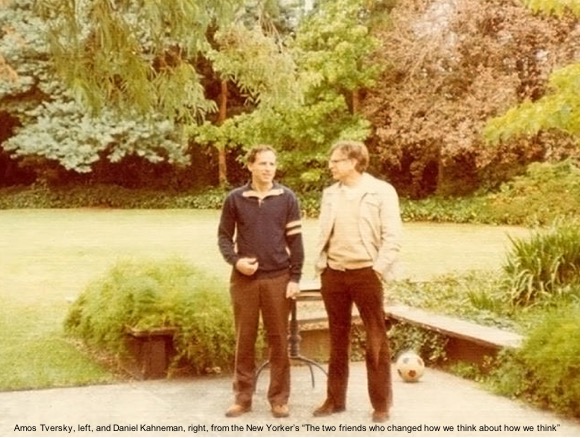Marketing’s Dirty Little Secret
For all the talk about customer centricity, there’s a dirty little secret that no marketer will easily admit to: Marketing — as a discipline and as the core of most traditional business school marketing curricula — is inward-looking. Take the much-vaunted four Ps: build the right product, price it correctly, put it in the right place, and promote it to induce purchase. It’s all about the brand, not about the consumer. The consumer responds predictably, robot-like, to the various strategies cooked up by marketers.
Meet Homo economicus — the rational consumer. The foundation of modern marketing. Shhhh! Don’t tell anyone. She doesn’t really exist.
It’s taken a while for the marketing community to even talk about this. When I was at the University of Chicago, I sat in Richard Thaler’s Ph.D. class on behavioral economics, which was, even in late 1990s, well ahead of its time and disconnected from the MBA curriculum of the abovementioned four-P flavor. In 2011, Nobel laureate Daniel Kahneman offered two very different thought systems for mass consumption in Thinking, Fast and Slow. Thaler recently reviewed the Michael Lewis (of Liar’s Poker and The Big Short fame) book on the collaboration between Kahneman and Amos Tversky. Here’s the basic idea: There are two systems that drive our decision-making. The first is highly analytical and was presumed to be the epicenter of our rational being.
The second is a much quicker, effortless, and instinctual process. This latter system, known as System 1, drives the majority of our decisions. System 2, our rational processing system, takes a back seat. Our evolutionary development instructs our brains to be parsimonious, favoring more energy-efficient processes. It may sound counterintuitive, but our rational mind doesn’t drive decisions. Our emotional mind (and I take some scientific liberty in that usage) does.
R.I.P., Homo economicus. Hello cognition, emotions, memories, and other fascinating things that we (unfortunately) know far less about than we do about marketing mix modeling and programmatic ad buying!

Last week, I attended the World Neuromarketing Forum 2017 in London, organized by the Neuromarketing Science & Business Association (NMSBA). The event brings together the best academics and practitioners (both client and agency) in the field to revel in the gloriously imperfect human at the front and center of marketing. We discussed many intriguing and exciting applications, some of which are featured below:
- Coca-Cola uses a variety of neural techniques to optimize its television creative development by figuring out how exactly to depict the product (short sips good, empty bottle bad), people (clear shots of faces works best), stories versus vignettes (stories start stronger, rapid cuts are bad), and more.
- As advertising accelerates rapidly beyond television, The Advertising Research Foundation (ARF) emphasizes the importance of a unified cross-platform creative strategy to enhance memory activation and the role of neuroscience in ensuring platform customization (for example, people engage very differently on mobile).
- Neuromarketing is front and center at Spanish toy company Imaginarium’s project to redesign its store layout using integrated techniques to measure engagement of people walking through a pilot store.
- Facebook measures how participants respond both cognitively and emotionally to conversing in virtual reality.
- P&G learned a lesson in brand equity when promoting Secret deodorant with Olay’s moisturizing power inadvertently stoked Unilever’s Dove sales (implicit association techniques reveal that Dove owns the equity around moisturizing).
The emotional consumer and the art and science of intelligent branding is a large part of my research agenda for the year. Consumer neuroscience is, without question, a powerful tool that marketers have at their disposal that goes straight to the heart, or should we say, the mind of the matter. Some key considerations for marketers as they think about how to leverage this emerging discipline:
- Don’t think of neuromarketing as standing apart from or in competition with however else you may be building brands, creating programs, or measuring effectiveness. It’s one more stream of intelligence (and a highly potent one), so add it to the mix and you will be wiser for it.
- There is evidence that neuromarketing tools are effective in predicting sales lift (based on some excellent ongoing work by Nielsen Consumer Neuroscience leveraging the wealth of media consumption and transaction data in the parent organization); while the lexicon of neurology and psychology may sound alien, the language of value creation is universal.
- If you are new to this, there are excellent proof-of-concept applications that are intuitive, cost-comparable to alternatives, and quick in delivering value. Ad testing is a good candidate, as is web user interface design.
- There are several quick hits to be had from neuromarketing. But please, please do not forget the long game. Best brands build strong emotional ties that resonate. And to build a strong brand will require you to have a deep appreciation for the very real, human, and imperfect thought process that you are hoping to affect. We know there’s more to it than a wandering gaze, dilated pupils, and a rush of blood to the head. Mastering the interplay between brand and mind — intelligent branding — is the ulimate prize.
Nobody said it would be easy — but at least now we are looking in the right place!
